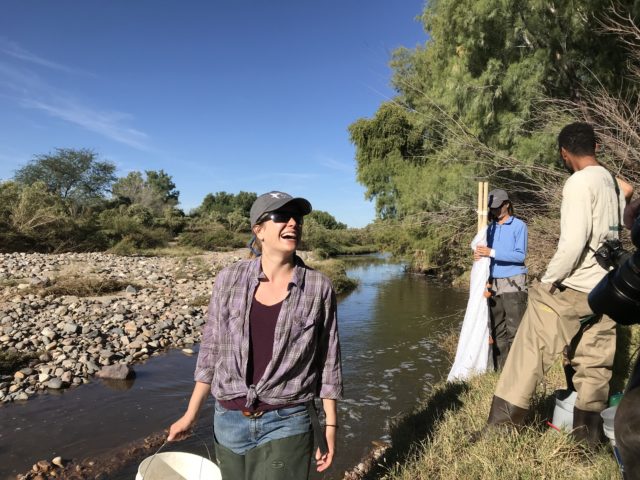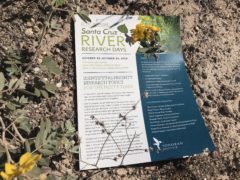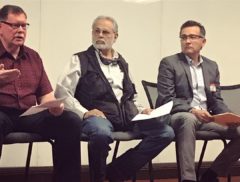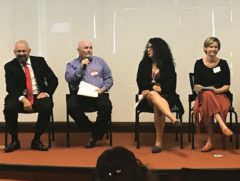
One of the most interesting parts of this year’s Santa Cruz River Research Days was a special panel and discussion session to determine priorities for future research. The speakers, researchers and community leaders in attendance felt that strengthening the understanding of the river’s inherent economic value (i.e., ecosystem services) as well as the role it plays in the regional economic system would lead to more persuasive justifications for funding restoration, recreational trails, education, and other public services. During one of the panel discussions a short debate emerged over the best ways to manage cattle and floodplains. Nonpoint source pollution, including garbage, plastic bottles, E. coli, and Contaminants of Emerging Concern, was identified as a significant problem throughout the river corridor that requires more creative solutions. And, continuing infrastructural challenges in the border region were discussed at length: specifically, how to prevent the pipeline that carries untreated wastewater from rupturing like it did in summer 2017.
 A trend toward interdisciplinary research came up often as we talked about current projects and areas needing more research, including the factors that influence project selection. We discussed the pre-event assessment survey, which showed that perceived community need was a major consideration for respondents. Drought, population increases, and changing water regimes all add urgency to the need for river research and management that ensures a living, flowing river that is the foundation of community health and prosperity.
A trend toward interdisciplinary research came up often as we talked about current projects and areas needing more research, including the factors that influence project selection. We discussed the pre-event assessment survey, which showed that perceived community need was a major consideration for respondents. Drought, population increases, and changing water regimes all add urgency to the need for river research and management that ensures a living, flowing river that is the foundation of community health and prosperity.
 The community leaders on our panels shared their unique perspectives and sparked a larger discussion about the kinds of studies that would have wide-reaching benefits. Panelists represented leaders in Tucson’s development community, the Greater Nogales-Santa Cruz County Regional Port Authority, ranchers, conservation advocates, local government, the National Park Service, and various regional planners.
The community leaders on our panels shared their unique perspectives and sparked a larger discussion about the kinds of studies that would have wide-reaching benefits. Panelists represented leaders in Tucson’s development community, the Greater Nogales-Santa Cruz County Regional Port Authority, ranchers, conservation advocates, local government, the National Park Service, and various regional planners.
 Because the Sonoran Institute looks for community-driven solutions, we were motivated to encourage and implement the input of many community voices during the event and in preparation for it. Hundreds of stakeholders participated in this effort and we’re always open to hearing more perspectives and ideas to help this river thrive. The result is the Santa Cruz River Research Priorities: A community-driven research agenda listing specific research questions proposed by community leaders and research themes that are a priority for people living and working near the Santa Cruz River.
Because the Sonoran Institute looks for community-driven solutions, we were motivated to encourage and implement the input of many community voices during the event and in preparation for it. Hundreds of stakeholders participated in this effort and we’re always open to hearing more perspectives and ideas to help this river thrive. The result is the Santa Cruz River Research Priorities: A community-driven research agenda listing specific research questions proposed by community leaders and research themes that are a priority for people living and working near the Santa Cruz River.
Download the Research Agenda and feel free to get in touch if you are looking for more information.
Blog Post By: Amanda Smith, Program Associate
